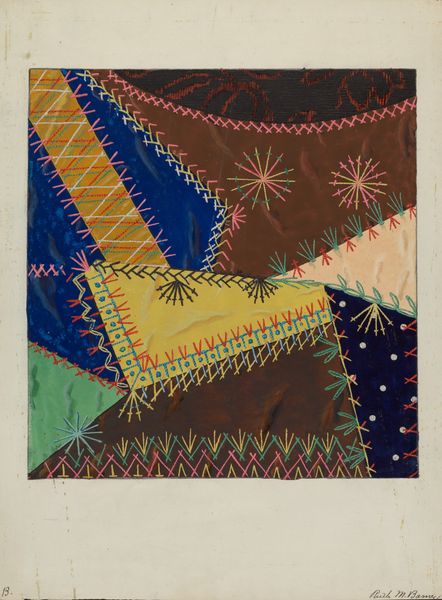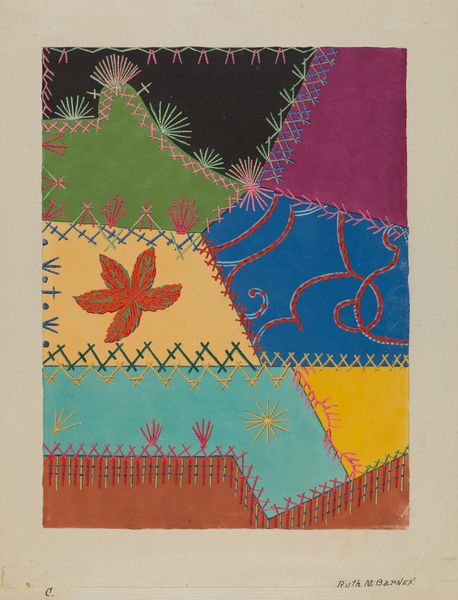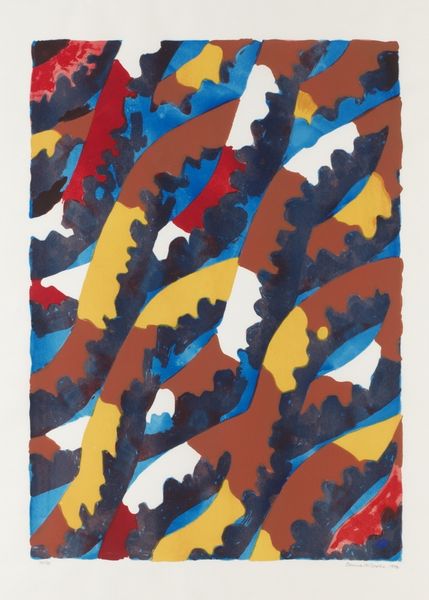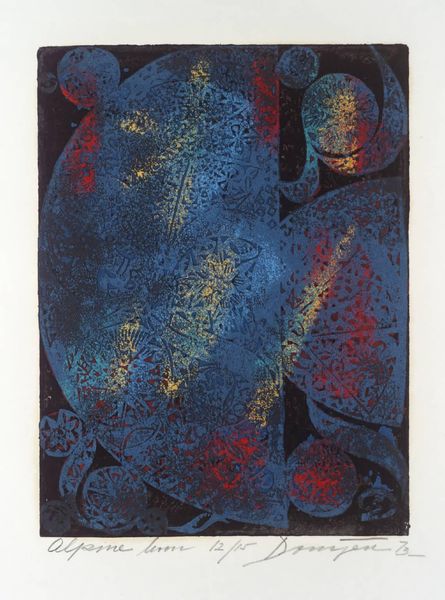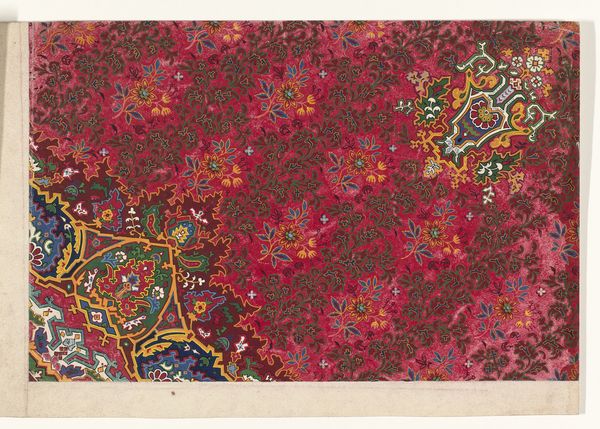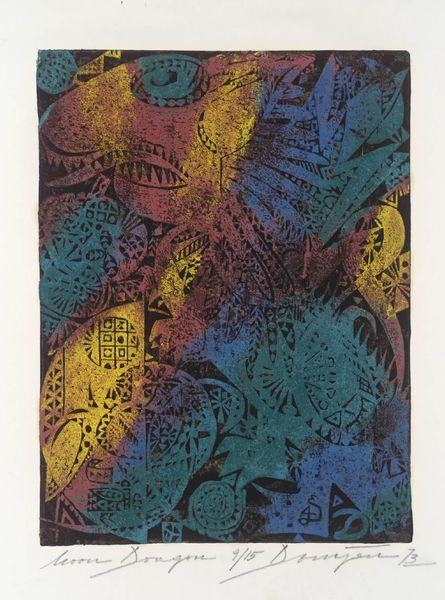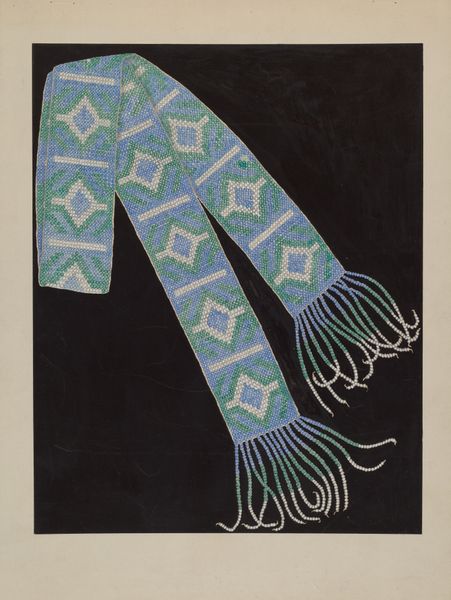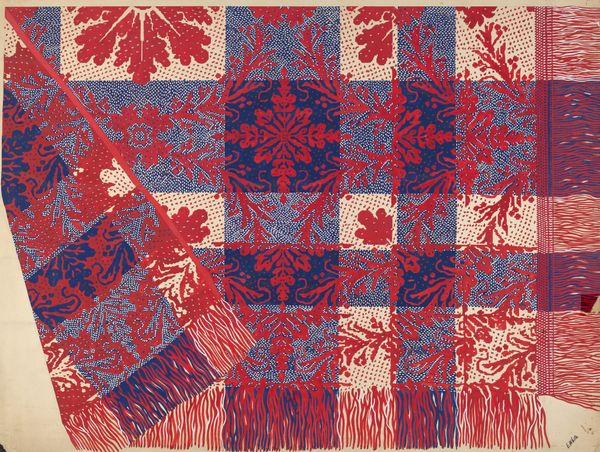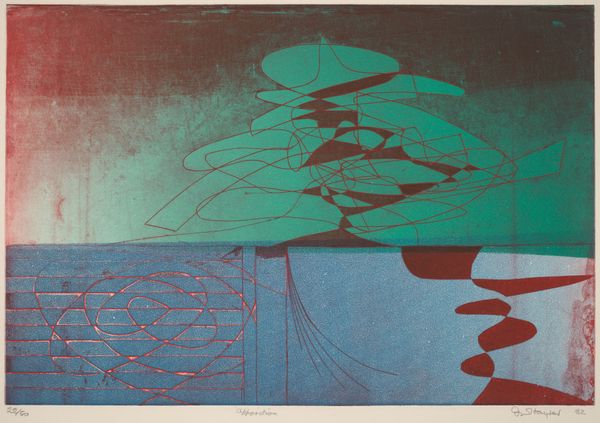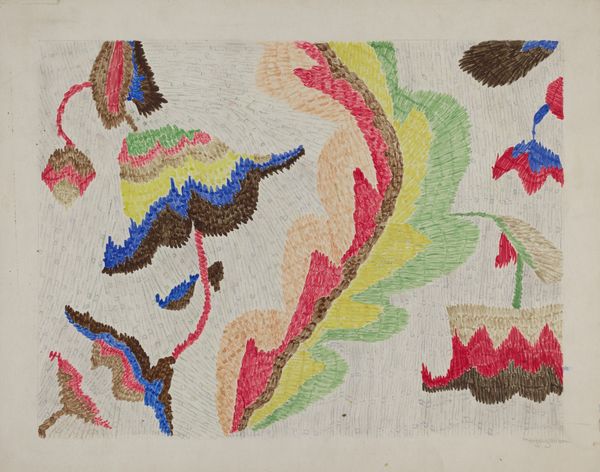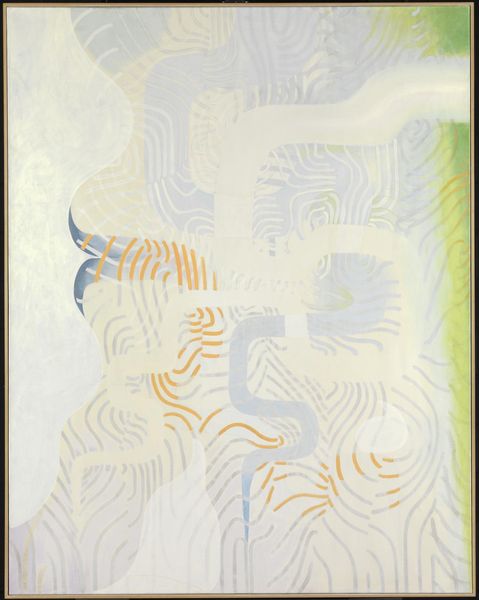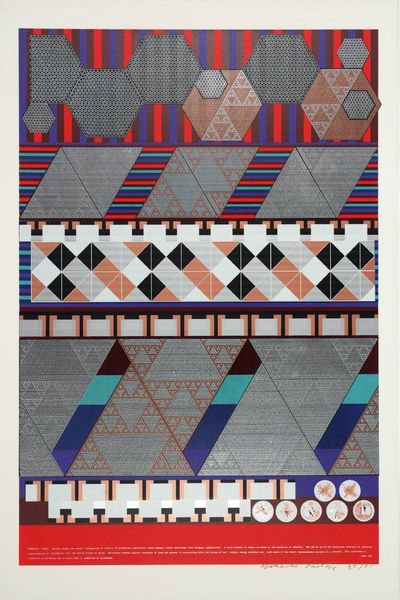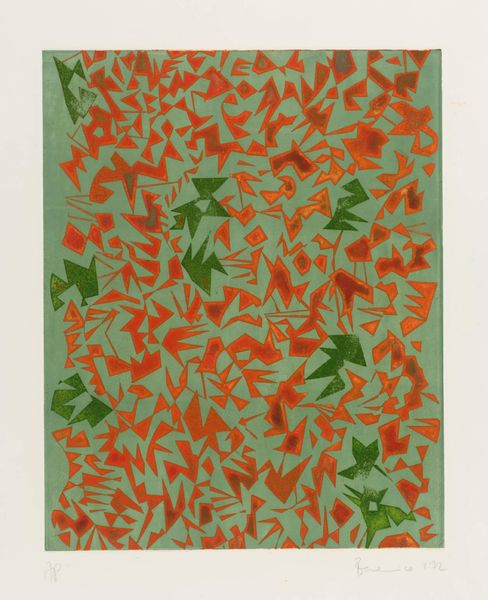
mixed-media, textile, mixed-media
#
mixed-media
#
folk-art
#
textile
#
folk art
#
folk-art
#
mixed-media
#
decorative-art
#
decorative art
Dimensions: overall: 35.8 x 26.5 cm (14 1/8 x 10 7/16 in.) Original IAD Object: 72" wide; 84" long
Copyright: National Gallery of Art: CC0 1.0
This is a detail of a “Crazy Quilt” made by Barnes, though the exact date is unknown. It’s composed of fabric scraps stitched together with embroidery. The “crazy quilt” aesthetic, popular in the late 19th century, embraced asymmetry and eclecticism. Unlike more structured quilting patterns, it celebrated irregularity. Look closely at the elaborate embroidery. The stitches aren’t just functional; they’re decorative, adding texture and visual interest. This reflects a broader Victorian interest in embellishment. These quilts were often made from luxurious fabrics like velvet and silk, remnants of the textile industry. But the process of quilt-making was usually a domestic craft, undertaken by women in their homes. It was labor-intensive, requiring hours of hand-stitching. So, while the materials might evoke wealth, the act of making speaks to the domestic sphere and the skills of the maker. Considering this context, we can see the “Crazy Quilt” as more than just a functional object. It’s a testament to the artistry and labor involved in domestic craft.
Comments
No comments
Be the first to comment and join the conversation on the ultimate creative platform.
